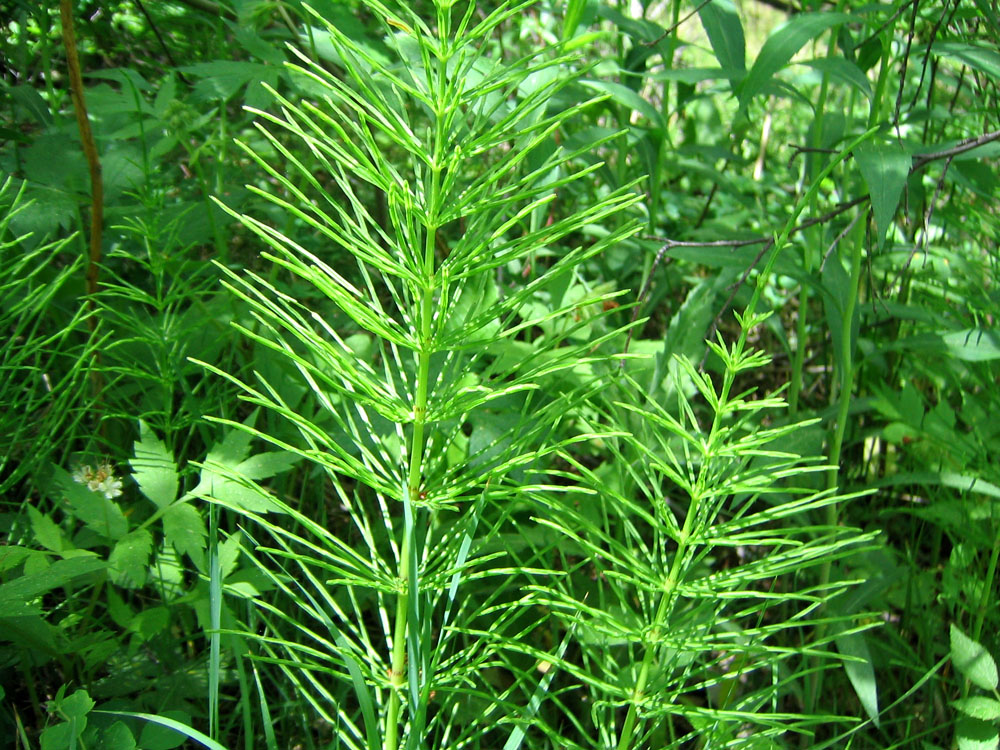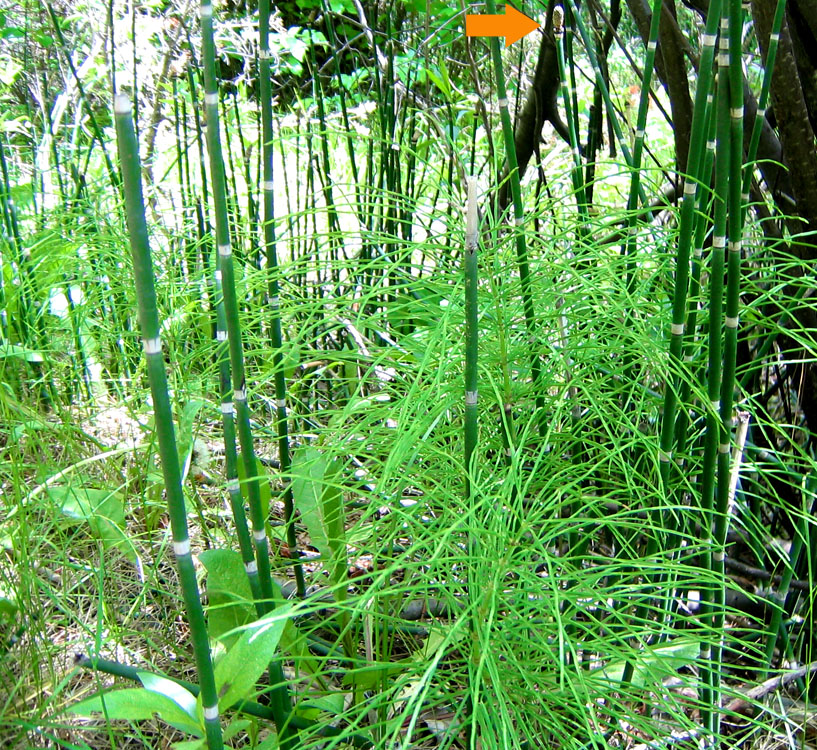Remember horsetail, from the Ice Age hike, that prehistoric plant, one of the oldest ancestors still living on Earth?
 Horsetail (Equisetum) is a living fossil, so old it doesn’t have seeds but reproduces by spores. It the last remaining member of the family of spore-producing plants that ruled the Earth during the Paleozoic, 300 million years ago.
Horsetail (Equisetum) is a living fossil, so old it doesn’t have seeds but reproduces by spores. It the last remaining member of the family of spore-producing plants that ruled the Earth during the Paleozoic, 300 million years ago.
Here is a spore bundle at the top of a horsetail cane:
Horsetail is so old it had matured for millions of years before dinosaurs took to roaming the Earth.
Horsetail is so old it was ancient by the time modern plants such as pine trees began to evolve.
Here is a guess of what the land that became Boulder might have looked like 300 million years ago when horsetail forests were growing. This land lay at the equator.
Horsetail is so old it ruled the land that became North America in massive forests with trees that reached a height of ninety feet. These were tropical rainforests, humid, dense, and waterlogged.
Here is what the mighty horsetail forests might have looked like:
Notice that few animals are pictured, because this was an age of amphibians. Scorpions were already ancient, but reptiles were only beginning to emerge.
When the forests died they were too wet to burn, so they sank into the ground. But they were too massive to decompose, so they just remained, piling up over centuries in thick peat bogs that over eons were buried under layers of mud. Underground and under pressure, the bogs solidified into coal.
The horsetail forests of 300 million years ago formed the thick coal beds under North America that powered this continent’s industrial age.
Thanks to Dave Sutherland for providing the paintings, courtesy of the Denver Museum of Nature and Science.



Love this!
I love the paintings of what the landscape looked like in other times. Very evocative and opens up the imagination. Thanks.